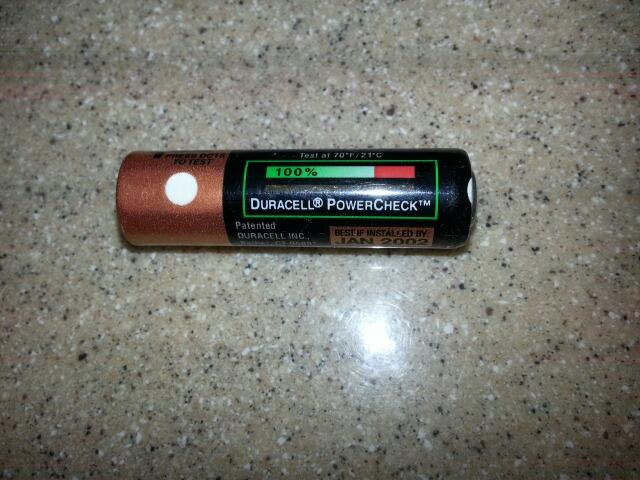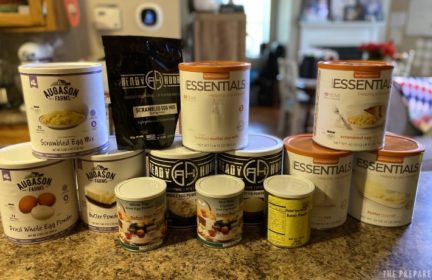How to read expiration dates
Since the pandemic started, I began to pay more attention to expiration dates. However, some items don’t have an expiration date but have recommended lifespans, like disinfecting wipes and motor oil. Also, some items like soap and shampoo may not have an expiration date, but I’d like to use the older product first. I’ve started looking at the date codes of the product. Most of the date codes are some form of Julian Date, which includes the year and a 3-digit number representing the day of the year. For example, for 20030, the first two digits ’20’ represent the year 2020 and the last three digits ‘030’ represent the 30th day of the year, which would be January 30. To simplify things, I’ve been using the Julian Date converter at http://longpelaexpertise.com/toolsJulian.php and putting a sticker with the date on the items.
Has anyone else been rotating items with no expiration date?
-
Comments (17)
-
Gideon ParkerStaff - March 13, 2021
I edited the title to hopefully make the point of the post clearer for other people. You’re welcome to edit it more.
Thank you for starting this great topic, this is a very important thing to know when getting into the wonderful world of prepping.
-
Bigwig - March 13, 2021
Always willing to have help with making information more clear. Thanks.
-
-
Bob - March 13, 2021
Bigwig, Yes, I do.
On just about everything. This includes cans of saddle soap to fluorescent highlight markers.
On sewing threads I don’t rotate with one exception. I rotate my 2 spools of nomex thread … used to repair fire-retardent garments. It might not matter but still do.
-
Conrad B - March 13, 2021
I did not know about the Julian Dates or how to read them. I’ll have to keep an eye out for them on my products. Thanks for teaching me about this.
I do try and rotate through items without an expiration date like with soap, bathroom cleaners, hair gel, toothpaste, etc… I’ll stick the newer things further back on the shelf and pull the older things forward. Rotate through.
I keep a sharpie on the shelf of my bathroom and I write the date of purchase on some things. This is good for rechargeable batteries, you know that you’ve had them for so many years and it might be good to get another set because the ones you are using may not hold as great of a charge as they used to.
-
Bigwig - March 13, 2021
I was surprised to find out some items like toothpaste have an expiration date. I wish rechargeable batteries had a system that indicated how many recharge cycles it went through.
-
Conrad B - March 15, 2021
Or at least bring back those Duracell POWERCHECK batteries that you could tell how much juice was left in them by touching the two contact points of the battery. That is probably the neatest thing that humans have ever created. I wonder why they don’t make them any longer.
-
Conrad B - March 16, 2021
Bigwig – I have a cheap multimeter I got for free from Harbor Freight years ago but have yet to play with it much. Do you know when a basic AA battery is considered low or unusable?
I think I remember a full battery being like 1.6 volts and a dead one was like 1.2 volts.
-
Supersonic - March 18, 2021
I know you asked this question to Bigwig, but if I could chime in I might be able to help.
Your traditional alkaline AAA, AA, C, D batteries might have a voltage of 1.65v when they are new but will level out at 1.5v when they are used up a little.
When a battery is considered dead will depend on the device. A digital camera, RC remote controller, or other high drain device might turn off and consider the battery dead as soon as 1.3v. While others will keep working fine with voltages as low as 1.2v, 1.1v, or 1v.
One thing you can do to extend the life of your batteries is that once one device considers it dead, try it in a low demand low drain device such as a wall clock or TV remote. I take all my ‘dead’ batteries, run them by my multimeter and sort them into various baggies labeled 1.5+, 1.35, 1.2, and 1.1. Whenever my TV remote batteries die, I pull from the lowest voltage bag and use it until the TV remote kills it, then I put all the truly dead batteries into a bag to take to my local Best Buy to get recycled.
Rechargeable batteries are another story. They will usually run at 1.25v when completely charged. I don’t know much about what voltages they are when they are considered dead because whenever a device says the batteries are dead I just throw them on the charger and top them off again.
-
-
Bob - March 14, 2021
https://www.health.harvard.edu/staying-healthy/drug-expiration-dates-do-they-mean-anything
Bigwig, Above link re pharma dates I believe worth placing here.
-
Bob - March 14, 2021
https://www.usda.gov/media/blog/2013/06/27/you-toss-food-wait-check-it-out
Bigwig, For comprehensiveness.
I once contacted USDA re shelf life of honey in plastic versus in glass.
-
Mike Hill - March 14, 2021
Really interesting article you linked to there Bob. I did not know that food poisoning bacteria won’t grow in the freezer and meat that is stored for years will be safe to eat, just might not taste good.
What did the USDA say about honey in plastic vs glass?
-
Bob - March 14, 2021
Mike, Glad you found article of interest. USDA said glass best due to plastic, over time, in hot weather, can leach into honey.
-
Mike Hill - March 15, 2021
Thanks for the answer. I agree, glass is great for home use and can be reused much easier. We like to do glass everything in my house.
Glass is horrible for bugging out with though. Heavy and fragile. But for home use where you will be staying put, its pretty great.
-
Bob - March 15, 2021
Mike, This is why my honey inventory has both glass packed honey and plastic packed honey.
My commitment is to shelter in place unless circumstances dictate otherwise. So, for usual living here in my BOP (I retired to it) glass stored honey is routinely used and jars refilled. If an evac, some plastic packed jars of honey in loadout.
“The nectar of the gods” is one of the best – and least costly [FN1] of the foods – a prepper can rely on.
Foot Note: As per the comparative criteria: nurishment, packaged weight & volume, shelf life, consumption w/o cooking, etc.
-
-
Binadaoc - March 28, 2021
Don’t confuse expiration dates and “Use By” dates. The latter dates are listed to get you to buy more products. The substance may still be good.
-
Spuyten Duyvil - March 28, 2021
Would like to add my simple solution on how I read (improved) expiration dates when I am in the garage looking in the pantry cabinet. Since the expiration date can be printed on canned goods in very small digits with different formats, and faint ink to boot, have settled on adding my own markings with a felt tipped black marker. For example, if a coffee can has an expiration date printed as “09202022,” or similar, I use the marker to add a larger, very visible “09/22.” Then store it marked side up, so that it is visible in low light conditions, without the need for “readers.” Also helps keep the rotation of canned goods easy to manage as replacements are added.
-
- Neutrality for the sake of survival and how to manage the full spectrum of ideologies - 10 hours ago
- Essential medical reference books for the prepper library - 13 hours ago
- News for the week of 2024-07-22 - 13 hours ago
- AR15 stock weight - 4 days ago
- Burning Candles - 5 days ago
This forum is heavily moderated to keep things valuable to as many people as possible. Full community policies are here. The basics:
- 1. Be nice to each other.
- 2. Stay focused on prepping.
- 3. Avoid politics, religion, and other arguments.
- 4. No unfounded conspiracies, fake news, etc.
- 5. Debate ideas, not people.


